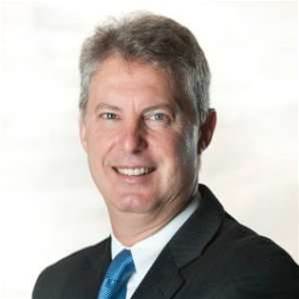Gary Sterrenberg had his work cut out for him when he joined the Department of Human Services (DHS) as its chief information officer in October 2011.

Not only was the department four months into its new role as a “super-agency” comprising Centrelink, Medicare, and the Child Support Agency, it was also tasked with cutting operating and capital costs in a Federal Government bid to bring the budget into surplus.
In an in-depth interview with iTnews last week, Sterrenberg noted that only part of the Government-mandated savings would come from his IT budget.
But “the mathematics are the mathematics”, he said, so some projects would likely be delayed.
“Like any commercial place, you’ve got to make decisions and set priorities,” Sterrenberg said. “[The projects will] all be done; it just may be done a year [later]."
Service delivery reform
DHS is part-way through a $374 million Service Delivery Reform (SDR) program to consolidate its agencies’ data centres, IT systems and contracts.
Work to integrate the mainframe systems, enterprise software and infrastructure was set in motion by former Centrelink CIO John Wadeson, who Sterrenberg said had left a “very good legacy”.
In the past year, the department has moved out of its data centre in Bruce, ACT, and one run by Macquarie Telecom in NSW.
Sterrenberg said it was in the process of vacating another facility in Burwood, NSW, with a view to having only three data centres – one in Hume, near the ACT-NSW border, and two in the southern Canberra suburb of Tuggeranong – by 2014.
In line with a 2010 infrastructure management deal, the DHS took on the “final pieces” of the Department of Veteran Affairs’ IT in December, and was preparing to assume responsibility for Medicare and Child Support Agency systems this year.
Medicare will end its 12-year outsourcing relationship with IBM in December. The Child Support Agency’s 12-year contract with Hewlett-Packard – formerly EDS – expires in June.
The department is also in the middle of negotiations with telecommunications service providers to establish a consolidated managed service arrangement for its sites and agencies.
Sterrenberg said work to integrate the various agency IT systems was like “flying an aeroplane and trying to fix the engine at the same time”.
“We move very carefully,” he said. “We’ve got really detailed plans that support all the execution; they are really tightly governed because obviously the impact can be quite significant if we get it wrong.
“To me, there’s such an emotional connection with the community when you work for the DHS,” said Sterrenberg, who formerly led ANZ retail bank’s IT.
“At the end of it is people in need; if something goes wrong, it has a real impact on people’s lives.”
Desktop staff join infrastructure team
The fourth and final component of SDR is a desktop modernisation project that aims to deliver a common environment to the department’s 37,000 workers.
Sterrenberg’s Desktop Modernisation Branch began implementation late last year, after a successful, 500-seat pilot of Windows 7, Microsoft Office 2010 and unified communications software.
The department targeted a “hybrid” fleet of thin and fat clients, with the latter catering predominantly to laptop computers.
Ten thousand users will migrate to the new platform by June, and a further 15,000 in the following six months, with a view to completing the enterprise-wide rollout in 2013.
Desktop Modernisation is one of a number of ICT teams that Sterrenberg “realigned” in recent months to clarify accountabilities and remove workload overlaps in the newly merged super-agency.
The Desktop Modernisation Branch was incorporated into an existing ICT Integration Branch, responsible for establishing a shared model of all of the department’s ICT Infrastructure services.
“We had a specific program set out running the common desktop and we felt that it was better to move that area back into the infrastructure division,” he said.
“We were finding that there were people running the business and people changing the business, it was better to bring those two within an infrastructure division rather than have infrastructure being managed in two different places.”
“Another key change is the centralisation of corporate functions – [for example] finances, HR, contracts and procurement – to support ICT.”
Sterrenberg said he has adopted an “industry-standard” operational model. No staff were made redundant as a result of the reshuffle, he said.
Decades of work to do
Sterrenberg said his goals for the next three years at the DHS are “clearly defined”, and revolve around shared services and driving more consumer transactions online.
He highlights discussions between the DHS and community groups on “co-designing” new service channels, including mobile and online applications, but said it is too early to discuss timelines as the development was “still in progress”.
Decisions on how DHS IT projects will be affected by Federal budget cuts, announced late last year, would be revealed in the department's annual report later this year, Sterrenberg said.
“We continue to look for opportunities to provide better service to our customers,” he said. “Our emphasis is to drive more transactions online because online channels tend to be cheaper than other channels.”
Last year, Sterrenberg’s predecessor Wadeson told iTnews that he expected the department to still be working to bring legacy systems online for the next two decades.
Sterrenberg agrees: “Given that we’ve got these massive engines that support the customer base out there, it’s not something that you want to do very quickly.
“Obviously there will be limitations on what we can invest, and how much we can physically do. Certainly, it’s a journey for the next ten to 15 years.”


.png&h=140&w=231&c=1&s=0)







 iTnews Executive Retreat - Security Leaders Edition
iTnews Executive Retreat - Security Leaders Edition












_(1).jpg&h=140&w=231&c=1&s=0)



